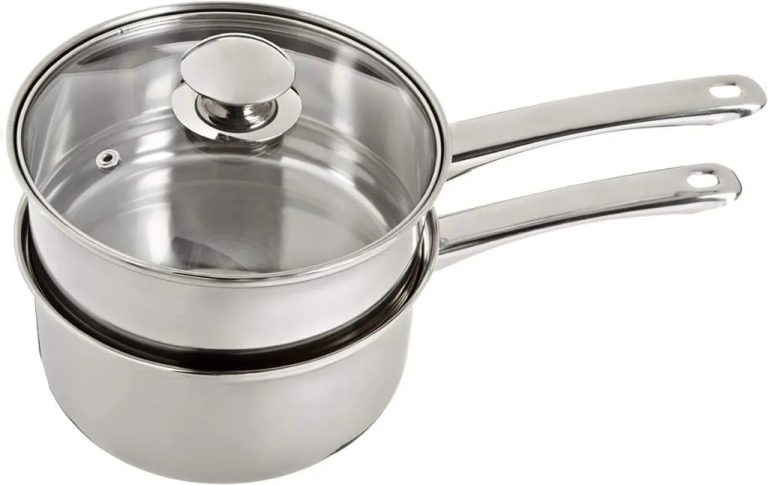What Is Waxing Treatments?
What is Waxing?
Waxing is a method of semi-permanent hair removal that removes hair from the root. It involves applying a layer of melted wax directly to the skin, allowing it to cool and harden, and then quickly removing the hardened wax along with the hair.
The purpose of waxing is to achieve smooth, hair-free skin for an extended period of time. The effects of waxing can last 3-6 weeks depending on the area being treated and the individual’s hair growth cycle.
Waxing has a long history dating back to ancient Egypt when both men and women would remove their body hair using a sticky emulsion made of oil and honey. The practice gained popularity in the Roman Empire and Middle Ages before evolving into the modern waxing treatments we know today. Waxing gained mainstream popularity in the 1960s and has continued growing in popularity as a convenient hair removal option.
Sources:
https://lesalon.com/blog/the-history-of-waxing/
Types of Waxing
There are two main types of wax used in waxing treatments – hard wax and soft wax:
– Hard wax is applied thickly over the skin and allowed to harden. The hardened wax is then pulled off, taking the hair with it. Hard wax adheres to the hair rather than the skin, making it a good choice for more sensitive areas like the bikini line, underarms and face. It can be used on coarse or fine hair. Some key benefits of hard wax are that it is gentler on the skin and less painful because it pulls directly on the hair rather than the skin (Source).
– Soft wax is applied in a thinner layer over the hair and then removed using muslin strips pressed onto the wax. The muslin strips are quickly pulled off in the opposite direction of the hair growth, removing the wax and hair. Soft wax adheres to the skin so can cause more irritation, but is ideal for larger areas like the legs, arms, chest and back. Benefits include being quicker to apply and removing shorter, fine hairs more effectively (Source).
Another consideration is hot wax versus cold wax. Hot wax is heated to soften it before application, while cold wax is used at room temperature. Hot wax adheres better and may be more effective at removing coarse or stubborn hairs. However, cold wax is considered gentler on sensitive skin.
Body Areas Commonly Waxed
Waxing can remove hair from many parts of the body. Some of the most popular areas to get waxed include:
Legs: Leg waxing removes hair from both lower legs and thighs. It provides smooth skin and can last 3-6 weeks before regrowth appears. Many people find leg waxing preferable to shaving since it provides longer lasting results.
Arms: Arm waxing removes hair from the underarms to the hands. It is popular to get the forearms waxed for events like weddings or vacations where sleeveless clothing may be worn.
Back: Back waxing is common for men who want to remove back hair. The process can be tedious since the back is a large area, but results last several weeks.
Bikini: Bikini waxing shapes and removes pubic hair along the bikini line. There are different styles such as the basic bikini wax, French wax, Brazilian wax, and more.
Brazilian: The Brazilian wax removes all pubic hair from front to back. It provides a bare look but does require some regrowth between waxes. Some discomfort is common but lessens over time.
Chest: Chest waxing can remove hair from the chest and stomach area on both men and women. It allows comfortable wearing of swimsuits and low cut tops.
Face: Facial waxing shapes eyebrows and removes peach fuzz and unwanted hair from the upper lip, chin, and cheeks. Precision is required to avoid irritation.
Underarms: Underarm waxing removes hair from the sensitive underarm area. It can help reduce sweating and odor. Regrowth varies from person to person.
Pros and Cons
Waxing offers some key pros and cons to consider when deciding if it’s the right hair removal method for you.
Some of the main pros of waxing include:
- Lasts longer than shaving – Waxing can keep skin smooth for 3-6 weeks, while shaving only lasts a few days.
- Exfoliates skin – The waxing process removes dead skin cells, leaving skin soft and smooth.
However, waxing does come with some potential drawbacks:
- Painful – Waxing hair removal can be quite painful, especially in sensitive areas.
- Ingrown hairs – Waxing can cause ingrown hairs for some people when the hair starts to regrow.
- Irritation – Skin may become irritated, red or swollen after waxing.
Overall, waxing provides longer lasting smoothness than shaving, but may cause discomfort, ingrown hairs, and irritation for some people. It’s best to weigh the pros and cons to decide if waxing is the right option for your hair removal needs.
Before and After Care
Proper aftercare is essential for getting the best results from waxing and preventing ingrown hairs, irritation, and other issues. Here are some key tips for before and after your waxing appointment:
Before your appointment, exfoliate the area gently with a scrub or loofah to remove dead skin cells. This allows the wax to adhere properly and pull the hairs more efficiently (Source: https://www.divinethreading.com/waxing-before-and-after-care-tips-at-the-beauty-salon/).
After waxing, avoid sun exposure and tanning for at least 24 hours, as your skin will be more sensitive. The sun can cause excess irritation and inflammation (Source: https://glambeautybar.com/your-waxing-before-and-after-care-advice/).
Be sure to moisturize the area daily with a gentle, fragrance-free lotion to soothe the skin and prevent dryness. Products containing aloe vera are ideal for calming any irritation (Source: https://www.divinethreading.com/waxing-before-and-after-care-tips-at-the-beauty-salon/).
Avoid hot baths or showers for 24-48 hours after waxing, as the heat can inflame follicles and lead to ingrown hairs. Lukewarm water is best (Source: https://glambeautybar.com/your-waxing-before-and-after-care-advice/).
Waxing vs Other Hair Removal
Waxing has some advantages compared to other common hair removal methods like shaving, laser hair removal, electrolysis, and depilatories. According to Why waxing is better? Comparison of different hair removal methods, waxing removes hair from the root so it lasts longer before regrowth compared to shaving where hair is cut at the surface. The hair also regrows finer and thinner with waxing.
Compared to laser hair removal, waxing can treat larger areas and does not have limitations based on hair color. Electrolysis permanently removes individual hairs by destroying the hair follicle, but the process takes much longer than waxing an area and requires many repeated treatments. Depilatories work by dissolving the hair but can cause skin irritation in some people, unlike waxing which is gentler on most skin types according to 5 Benefits of Waxing vs Other Hair Removal Methods.
Overall waxing stands out for its ability to remove hair quickly from large areas while achieving smooth results that can last weeks. The hair regrowth is also finer and thinner versus shaving. While electrolysis and laser target hair follicles more permanently, waxing is a quick and affordable option for whole area hair removal.
How to Prepare for a Wax
There are a few key things you can do before your waxing appointment to prepare your skin and hair to make waxing more effective and comfortable:
Take an over-the-counter pain medication like ibuprofen an hour before your appointment to help minimize discomfort. The medication can help reduce inflammation caused by waxing (source).
Trim your hair to around 1/4 inch in length a few days prior. The wax adheres best to hair that is at least 1/4 inch long. Trimming will also help the process go quicker (source).
Avoid applying lotion or thick creams before your appointment, as these can create a barrier on the skin. Your skin should be clean and dry so the wax can grip the hairs more effectively (source).
What to Expect
The waxing process begins with cleaning and preparing the skin in the area to be waxed. The wax technician will apply a pre-wax oil or powder to the skin to allow the wax to grip the hair better.1 The technician will then apply a layer of warm or hot wax in the direction of hair growth and press a cloth or paper strip onto the wax. When ready, they will quickly pull the strip off in the opposite direction of hair growth to remove the hair from the follicle.
Pain levels can vary greatly depending on the sensitivity of the area being waxed, the skill of the technician, and a person’s individual pain tolerance. Areas with thinner skin like the bikini line generally tend to be more painful than areas with thicker skin like the legs. Many describe the feeling as a brief stinging or pinching sensation during the moment of hair removal. The pain only lasts a second and then dissipates quickly. 2
Some temporary redness of the skin in the waxed area is common immediately after waxing. The skin may appear slightly swollen and irritated. This usually subsides within a few hours. Applying a soothing gel or lotion after can help reduce redness and irritation. With repeated waxing over time, skin tends to become less sensitive and get used to the process.
Aftercare Tips
Proper aftercare is crucial for getting the best results from waxing and avoiding irritation or ingrown hairs. Here are some key aftercare tips to follow:
Avoid sun exposure on freshly waxed skin. The skin is more sensitive after waxing, so sun can cause burns or irritation. Wait at least 24 hours before sun exposure.[1]
Exfoliate regularly after waxing to prevent ingrown hairs. Use a gentle exfoliant 2-3 times per week to remove dead skin cells and allow new hairs to grow through the skin. This helps prevent irritation and ingrown hairs.[2]
Moisturize daily to soothe skin and reduce redness. Apply aloe vera gel or a gentle moisturizer like coconut oil to hydrate the skin and calm any irritation. This helps the skin heal faster.[3]
Avoid irritation by not using harsh products. Don’t use products with fragrance, dyes, or alcohol on freshly waxed skin as these can cause stinging. Stick to gentle, fragrance-free products.
Cost and Frequency
The cost for waxing treatments can vary widely depending on the size of the area being waxed, the type of wax used, and the geographic location of the salon. In general, smaller areas like eyebrows, upper lips and chin tend to range from $10-$30. Larger areas like legs, arms, and backs tend to range from $40-$80. Brazilian and bikini waxes typically range from $35-$80.
According to sources, a full body wax can cost between $100-$200 on average, with prices on the higher end at upscale salons in major cities [1]. The average cost for a Brazilian wax is estimated between $35-$80, while a leg wax may range from $40-$100 [2].
In terms of frequency, most experts recommend getting waxed every 4-6 weeks to maintain smooth skin. The regrowth rate can vary based on individual factors like hair type and age. Areas like the bikini line may need to be waxed more frequently than legs or arms. It’s best to follow the recommendations of your waxing technician for how often to schedule appointments.




